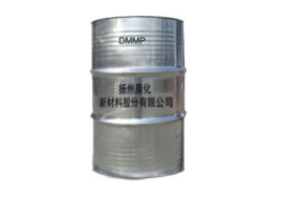With the continuous development of our economy, there are more and more unsafe factors in our life. For example, fire also happens from time to time. At first, we can not control this phenomenon. However, with the development of our science and technology, in order to prevent the occurrence of fire, people have developed flame retardants, which effectively prevent the unlimited spread of fire. So how do flame retardants prevent the spread of fire?
The heat released by any combustion in a short time is limited. If part of the heat released by the fire source can be absorbed in a short time, the flame temperature will be reduced, the heat radiated to the combustion surface and acting on the cracking of vaporized combustible molecules into free radicals will be reduced, and the combustion reaction will be restrained to a certain extent. Under high temperature conditions, the flame retardant has a strong endothermic reaction, absorbs part of the heat released by combustion, reduces the temperature of combustible surface alkyl glycosides, effectively inhibits the generation of combustible gases and prevents the spread of combustion. The flame retardant mechanism of Al (OH) 3 flame retardant is to improve the flame retardant performance by increasing the heat capacity of the polymer so that it can absorb more heat before reaching the thermal decomposition temperature. This kind of flame retardant gives full play to its heat absorption characteristics when combined with water vapor, and improves its flame retardancy.

After the flame retardant is added to the combustible materials, the flame retardant can form a glass like or stable foam covering layer at high temperature, isolate oxygen, have the functions of heat insulation, oxygen isolation and preventing the escape of combustible gases, so as to achieve the purpose of flame retardance. For example, when heated, organophosphorus flame retardants can produce crosslinked solid substances or carbonized layers with more stable structure. On the one hand, the formation of the carbonized layer can prevent the further pyrolysis of the polymer, on the other hand, it can prevent the internal thermal decomposition products from entering the gas phase to participate in the combustion process.
According to the chain reaction theory of combustion, free radicals are needed to maintain combustion. The flame retardant can act on the gas-phase combustion zone to capture the free radicals in the combustion reaction, so as to prevent the spread of the flame, reduce the flame density in the combustion zone, and finally reduce the combustion reaction speed until termination. For example, the evaporation temperature of halogen-containing flame retardant is the same or similar to the decomposition temperature of polymer. When the polymer is decomposed by heating, the flame retardant also volatilizes at the same time. At this time, halogen containing flame retardants and thermal decomposition products are in the gas phase combustion zone at the same time, so halogen can capture free radicals in the combustion reaction and interfere with the chain reaction of combustion.